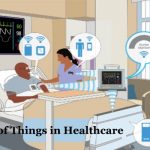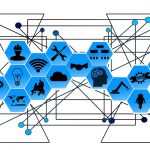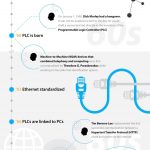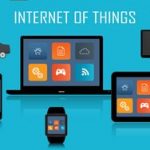Why The internet Of things would possibly never talk a common Language
in the mean time, the internet of issues has some communications issues.
except you keep moderately, you may turn out with a sensible garage door opener that may’t speak along with your safety digicam, or a smart door lock that received’t discuss to your alarm device. The set of connected gentle bulbs in your hallway may not be on talking terms with those in the living room, and your basement flood detector almost definitely couldn’t get a message via to your smart television.
Ideally, these units would merely have an ordinary way to keep up a correspondence, so customers wouldn’t have to worry about ensuring each product works together. Some firms, akin to Microsoft, Qualcomm, Samsung, and Intel, are actually attempting to determine how one can make that occur.
then again, the bold goal of a standard web of issues language is beginning to look like a Tower of Babel. during the last year, tech titans like Apple, Google, and Amazon have constructed up their own ways of connecting to vast numbers of good residence products, and these corporations have proven no real interest in standardization. As these systems acquire traction, is it too late for a unified language to take cling?
Waves And words
The perception of interoperability in IoT units most often refers to one in all two totally different concerns, which can every so often get conflated.
First, there’s the networking layer, which determines how units join to 1 any other in the course of the airwaves. Some gadgets use smartly-based requirements such Wi-Fi and Bluetooth, whereas a power-environment friendly alternative referred to as 802.15.four types the root of other protocols equivalent to ZigBee and Thread. each and every means has strengths and limitations, however as a result of each and every requires a separate radio, it’s uncommon to see a single sensible home product aiding a couple of or two protocols.
even if the networking layer is a conundrum in itself, it already has a partial answer in “hub” or “bridge” gadgets, which act as switchboards for merchandise that use different networking protocols. Philips Hue lightbulbs, for instance, use the ZigBee protocol to connect with a bridge tool, which then connects to Wi-Fi for regulate by using smartphone or pill. We’re even starting to see bridge-like features constructed into wi-fi routers, such as Google’s OnHub.
The knottier problem with IoT has to do with the application layer, which is essentially the language units use to perform particular duties. If a thermostat and motion detector can talk to one another, for example, they are able to determine how you can turn down the temperature when no one’s home. Likewise, a device with voice recognition could keep watch over different units around the home equipped they consider one some other.
up to now, the tech industry has made up our minds one of the best ways to handle that is to create their own application layers. Apple has HomeKit for controlling licensed sensible house products with Siri, whereas Amazon has its own Alexa digital assistant constructed into the Echo speaker and fireplace tv set-top field. Nest—owned by Google father or mother company Alphabet—has created a system that automates sure actions throughout totally different units. (One instance: Nest’s thermostat can turn off a furnace when its smoke detector senses trouble.) Google itself is constructing its own language, referred to as Weave, and Samsung has a system referred to as SmartThings that it acquired in 2014.
For device makers, the sheer selection of languages on provide poses a predicament: which ones do you support when building a new product?
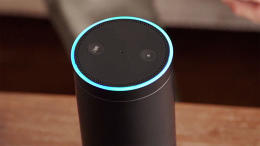
“you may no longer have the instruments to do everything, and you may also not have the capability, the bandwidth, the processing energy to do the whole lot in a person product, so you have to make choices,” says Tom Kerber, an analyst with Parks friends. “Limiting those choices to the crucial few is necessary.”
meanwhile, customers are left to untangle a spider internet of product integrations. Samsung SmartThings units, for example, are controllable through Amazon’s Alexa machine, but not via Siri. August sensible locks are controllable thru Siri, however no longer through Alexa. Philips Hue lightbulbs have some neat integrations with Nest, however Cree lightbulbs don’t. Wouldn’t it’s nice when you didn’t must consider all this stuff?
Enter the usual
ahead of Apple and Amazon even created their smart house techniques, different trade gamers anticipated the issue and began working on standard methods for linked devices to communicate. the theory is that a tool like Nest shouldn’t have to distinguish between Philips Hue and Cree lightbulbs. as an alternative, it could simply recognize lightbulbs typically and offer similar capabilities to all of them.
still, now not everyone has the same opinion on the way to transfer forward, and during the last couple years, two major competing standards groups have emerged: the AllSeen Alliance, with Qualcomm, Microsoft, LG, and Sony amongst its key backers, and the Open Interconnect Consortium, whose backers embrace Intel and Samsung. to this point, neither group has produced much of an ecosystem on its own.
“at the moment, the fact that they’re combating every different…they’re splitting the apple,” Kerber says.
Some indicators of development did emerge last month, when AllSeen members Microsoft, Qualcomm, and Electrolux joined the Open Interconnect Consortium, now renamed the Open Connectivity foundation (or OCF). but Kerber notes that it’s now not a whole merger. AllSeen continues to be an independent entity with its personal framework, known as AllJoyn, though the hope is that each techniques will interoperate.
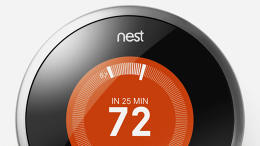
Matt Perry, a Microsoft program manager who works on the web of issues, stresses the necessity for endurance as the two teams unravel their variations. while quibbles over bylaws, construction, and intellectual property nonetheless need to be labored out, Perry notes that Microsoft and Qualcomm are the 2 biggest contributors through some distance to the bottom code of AllSeen’s AllJoyn framework.
“We consider the announcement…was a super first step, and we’re actively working against our finish purpose right here, which is one usual supported by way of the most important amount of corporations conceivable,” Perry says.

Too Early, Or Too Late?
despite the fact that AllSeen and Open Connectivity basis come together, they nonetheless have a mountain of labor in front of them. There’s the technical problem of determining how interoperability should work, and the way to market these advantages to shoppers, so that they recognize what they are getting and which products it can work with. (Perry gained’t say with walk in the park, as an example, that the Open Connectivity groundwork will have some kind of consumer-going through label.) as soon as all that’s settled, tool makers should create the kinds of flagship products that get folks to spend money on the ecosystem, on par with hits like the Nest Thermostat and Amazon Echo.
There’s additionally the extra elementary query of whether an ordinary amounts to much if doesn’t have the beef up of tech titans like Apple, Google, and Amazon. to this point, these firms haven’t shown much pastime in both OCF or AllSeen.
“hi there, we would love for them to enroll in our efforts in growing one open standard. Our phones are open,” Perry says. “We’re driving for what’s best for patrons, and whether or not it’s Nest or these different products, it’s going to be great if all of those products work together.”
in the period in-between, OCF govt director Mike Richmond takes the view that this is a long game, using the increasingly more familiar analogy that today’s internet of issues is like the internet of the early Nineteen Nineties: again then, walled-backyard portals like america online and Prodigy were the norm, unless individuals revealed what they have been missing on the open net.
“The web of web pages utterly modified that complete dynamic, as a result of open frequently wins in the long run, and that i don’t see any this is why the web of things shouldn’t have a an identical dynamic for precisely the identical cause,” he says.
It’s a good level, but one who handiest holds real if the services that emerge from an open standard are better than the proprietary techniques that exist now. How that in fact occurs is roughly arduous to check.
for that reason, the mere existence of an open internet of issues standard is on some level a leap of religion, says Macario Namie, vp of strategy for Jasper, an organization that helps deliver cellular connectivity to IoT merchandise. The plan is to construct the framework, and hope the fascinating use circumstances practice.
“If everyone believed that they could build on one single seller’s platform, it will be completed already,” Namie says. “They wouldn’t be talking about it, proper? So i believe there’s nonetheless much more room for innovation right here.”
fast company , learn Full Story
(22)



